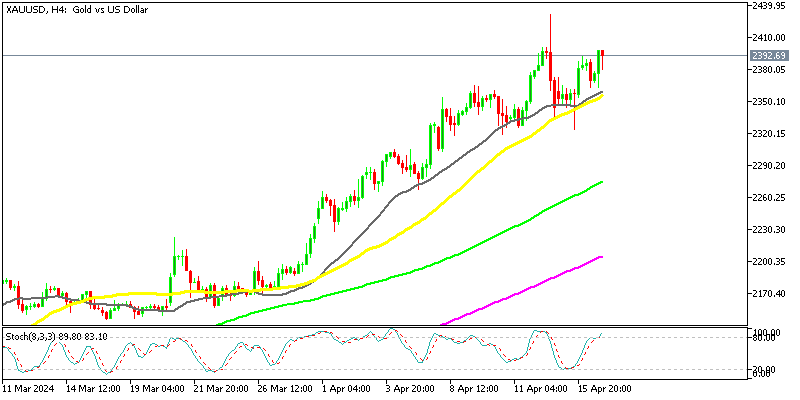The precious metal, traditionally seen as a safe haven, concluded the week with a marginal 0.60% increase, settling at $2,342.23.
The Gold (XAU/USD) price forecast now turns to a series of global economic events that may influence investor sentiment and price dynamics.
Key Economic Releases to Watch
In the coming week, markets will closely monitor the release of the U.S. Core Retail Sales and Empire State Manufacturing Index, alongside commentary from FOMC members. Retail sales are a significant economic indicator, reflecting consumer spending trends which can impact gold prices as they often inversely correlate with economic optimism. Similarly, manufacturing data provides insight into industrial strength, an essential component of economic health.
The Influence of Housing Data on Gold Prices
Building permits and housing starts are also on the calendar. As leading indicators of economic activity, strong housing data could bolster investor confidence, potentially leading to a decrease in gold’s allure. However, should the figures disappoint, XAU/USD could find support as gold’s appeal as a hedge against economic uncertainty grows.
Fed Speeches and IMF Meetings Set the Stage
The week is rife with speeches from various Federal Reserve officials, including Chair Powell, and the ongoing International Monetary Fund (IMF) meetings. These events may cause fluctuations in the XAU/USD price as investors seek to glean insights into future monetary policy and global economic outlooks. Powell’s statements, in particular, have the potential to cause significant market movement, given the Fed’s role in shaping U.S. monetary policy.
The aforementioned events, coupled with the fact that Gold prices have maintained stability above the pivot point of $2,368, set the stage for potential bullish sentiment in the market. The immediate resistance at $2,399 and subsequent levels at $2,421 and $2,450 will be key to determining the near-term trajectory of gold prices.
Concurrently, the Relative Strength Index (RSI) currently hovers around 48, signifying a neutral market that could be swayed by forthcoming economic announcements. The 50-Day Exponential Moving Average (EMA), at $2,326, offers additional perspective, placing current prices in a context that may be indicative of emerging trends.
Given the interconnected nature of these financial indicators and geopolitical events, the upcoming week promises to be pivotal for gold markets. Investors and traders alike should prepare for volatility and be ready to adjust their strategies in response to real-time economic data releases and central bank guidance.
In conclusion, while the XAU/USD price forecast remains cautiously optimistic, the multitude of financial events on the horizon could significantly influence the direction of Gold prices. As such, market participants should remain vigilant, keeping a close eye on the evolving economic landscape and its implications for Gold as both an investment and a global monetary standard.
Gold Price Forecast: Technical Outlook
Gold closed the week at $2,342.23, posting a modest gain of 0.60%. The four-hour chart shows key price levels to watch. The pivot point for the upcoming sessions is marked at $2,368, with immediate resistance at $2,399. Should gold push past this, we may see it test further resistance at $2,421 and $2,450. On the downside, initial support forms at $2,327, with subsequent levels at $2,303 and $2,268 offering potential fallbacks.
The Relative Strength Index (RSI) stands neutral at 48, suggesting gold prices could swing in either direction. The 50-Day Exponential Moving Average (EMA), sitting at $2,326, is in close alignment with the current pricing, indicating a stable trend. The current upward price channel suggests support around $2,340; a dip below could lead to increased selling pressure.




















